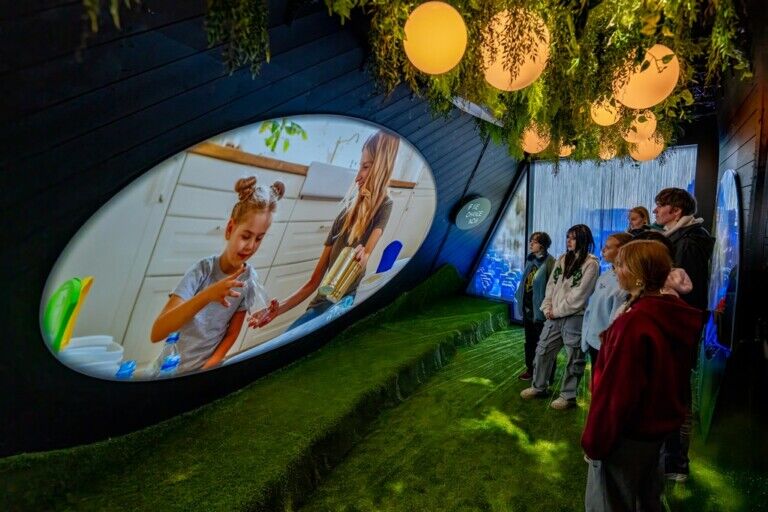Sarner International, a leading experiential design expert, has delivered a significant new upgrade to the climate exhibition at the internationally acclaimed Glacier Museum (Norsk Bremuseum) in Fjærland, Norway.
The upgrade is the latest in a long line of projects with the museum, beginning 35 years ago when Sarner designed and installed its inaugural exhibition. Sarner continues to collaborate closely with the museum’s directors and team to realise new and exciting projects.
Ross Magri, managing director at Sarner International, says: “We are proud to have maintained such a close relationship with the Glacier Museum over three decades. This new upgrade builds on our shared commitment to meaningful storytelling, sustainable design, and inspiring action for the future of our planet.”
See also: Top 9 sustainability trends in the attractions industry for 2025
Time to act
Climate change is rapidly accelerating, and reports of floods, wildfires, and storms fill the headlines. As such, the exhibition upgrades combine the most recent scientific findings, carefully consider the negative consequences of man-made climate change, and offer stark projections for the future if action is not taken.
However, it also shares a message of hope and speaks of how we can protect the planet, restore ecological balance, and help shape a better future through informed choices and collective action.
The exhibition theme, to offer a vision of a future where science, technology, and nature coexist in balance, is complemented by an accessible design with minimal text and strong visual imagery. The deliberately clean and modern visual language, thoughtful spatial design and contemporary presentation combine in an evocative exhibition that conveys urgency and optimism, inspiring guests to reflect, feel, and act.
The upgraded exhibition formally opens on 9 May, and tells the museum’s climate story in two parts.
The first part, named “Changing Climate – From Past to Future”, is a timed, immersive sequence that explores the history of Earth’s climate. Guests are transported back five billion years to the formation of the atmosphere, and to eras when natural climate changes led to conditions much warmer and colder than we experience now.
Leading into the second half, the narrative then seeks to show how people started to influence the climate.
Part two focuses on the climate changes that we are already experiencing and looks to the future of our planet. Guests face the consequences of climate change and learn about the challenges that humanity will confront.
The experience ends with an engaging film narrated by Sir David Attenborough. This celebrates the variety of life on Earth and highlights our shared responsibility to protect it.
“There is still time to act. Earth is the only home we have.”
Reusing & reimagining
The upgrade has retained much of the original scenic and lighting elements, while enhancing the experience with large-scale projections, multi-screen installations, lighting effects, and graphic environments. Sustainability was a key factor in the project, and elements from the original exhibitions were reused wherever possible.
The museum’s iconic building was designed by renowned architect Sverre Fehn, and its angled walls and curved spaces provided unique challenges and opportunities. With thoughtful integration, the projections and scenic elements both respect and enhance the impact of the original design.
Last month, Sarner International announced that it has been appointed to lead the planning and design of a new visitor centre at the Muskau Arch, a German-Polish UNESCO Geopark site recognised internationally for its outstanding geological and cultural importance.
